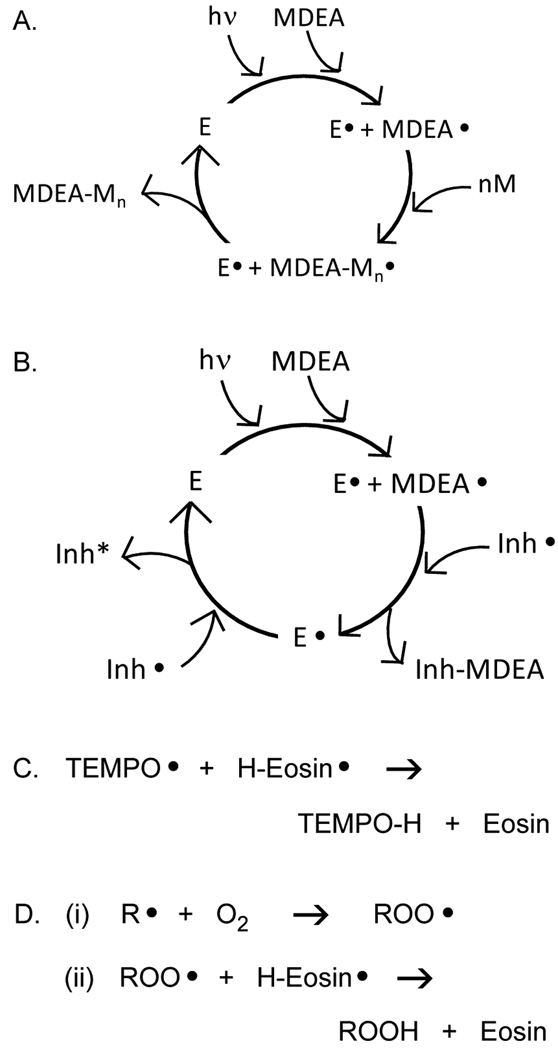Figure 6.
A. Proposed mechanism to explain the observation that eosin-initated polymerizations have a higher termination rate than expected. It is hypothesized that eosin radicals terminate propogating polymer chains by disproportionation, regenerating eosin and ultimately resulting in increased termination. B. Proposed mechanism by which eosin consumes inhibitors. It is hypothesized that eosin radicals react with inhibitor radicals or radical intermediates in the inhibition process, thereby regenerating eosin and consuming the inhibitor. Inactive inhibitor is depicted by Inh*. C and D. Specific proposed regeneration reactions of semi-reduced eosin with TEMPO and oxygen.

